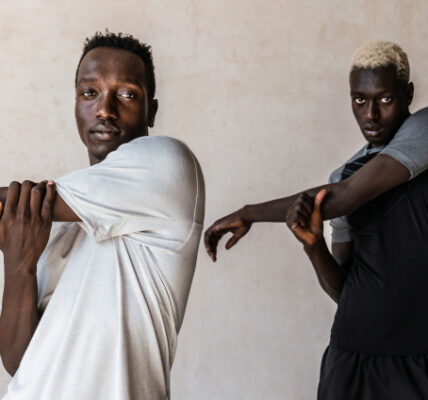There’s a strange quiet that settles over a rugby field when no one is watching. No whistles, no chants, no crashing tackles. Just the rustle of wind through goalposts and the memory of boots that once thundered across turf. In KwaZulu-Natal, where rugby runs through bloodlines like ink through scripture, there are legends who no longer take the field, but whose presence is felt in every tackle, every anthem, and every rising star.
This is not a story about matches played. It’s about the men who shaped them, and the ground that holds them now. From trylines to tombstones, KZN’s rugby history is not just archived in books and broadcasts, it’s etched into headstones, echoed in family toasts, and whispered through the changing rooms of schools and clubs that still chase glory in their name.
Drive through towns like Pietermaritzburg, Durban North, and Richmond, and you’ll find cemeteries that don’t advertise their significance. No stadium lights, no trophies on display. But buried beneath those quiet plots are men who once wore the green and gold with a fury you could feel in your chest. Like Des van Jaarsveldt, the first (and only) Rhodesian to captain the Springboks, who passed away in July 2025 at 96. Though born in Zimbabwe, his later years saw him settle in KwaZulu-Natal, where his legacy lingered long after the roar of Ellis Park faded. Van Jaarsveldt wasn’t just a captain, he was a symbol of rugby’s complicated heritage. A man who challenged the status quo when it wasn’t fashionable or easy to do so. He is now buried in the province he quietly helped transform, not through politics or protest, but by the example of his resilience.
And then there are the unsung heroes, men whose names never made headlines, but whose fingerprints are on every player who came through their coaching sessions, whose strategies were whispered in huddles, whose faces still hang in faded clubhouse photos beside pool tables and sponsor boards.
KwaZulu-Natal’s fields are more than grass, they’re sanctuaries. College Rovers. Glenwood High. Kings Park. Every blade has seen sweat, sacrifice, and the kind of bone-deep heartbreak that only rugby can deliver. But these spaces also carry memory. Because when a legend dies in KZN, the province doesn’t forget. It weaves them into ritual.
Pre-game silences are not just gestures here. They are sacred. Some clubs still pour out a post-match brandy for a former captain who never missed a third half. Some teams insist on warming up on a specific stretch of the pitch where “Coach Tony” once barked orders, because it “feels right.”
In a sport where history is often written by scores and silverware, KZN prefers to remember the human behind the jersey. The fullback who used to run barefoot down gravel roads to training. The hooker who coached two generations before collapsing on the same bench he once lectured from. The centre whose final try was scored at a dusty away match in eShowe before a heart attack took him mid-season. These are not statistics. These are scriptures in local lore.
Talk to the families of fallen players and coaches, and you’ll understand something sacred. The gravestone may mark an ending, but the stories don’t stop. Sons wear their father’s club jerseys on commemorative match days. Daughters who grew up on the sideline now manage fixtures and carry water bottles for the new squads. Widows sit quietly in the stands, recognizing the rhythm of the game even if the players have changed.
And sometimes, grief meets celebration. At memorial tournaments held in places like Hillcrest or Ballito, the mood is as much about legacy as loss. Old teammates reunite, trading banter, beers, and barely believable stories about “that one game in 1987” that always ends in someone laughing until they cry. And in that laughter is healing.
 KZN has no official “Rugby Hall of Fame”, but maybe it doesn’t need one. Its real hall is scattered across headstones, photo albums, school halls, and matchday echoes. It lives in the way the ball is passed down, not just physically but spiritually. There’s a reason players kiss their fingers and point to the sky after scoring. It’s not for stats. It’s for someone who used to be in the stands.
KZN has no official “Rugby Hall of Fame”, but maybe it doesn’t need one. Its real hall is scattered across headstones, photo albums, school halls, and matchday echoes. It lives in the way the ball is passed down, not just physically but spiritually. There’s a reason players kiss their fingers and point to the sky after scoring. It’s not for stats. It’s for someone who used to be in the stands.
Rugby here is not just a game. It’s inheritance. You don’t retire from it, you become part of its ground. And when you’ve given your body to the game, the soil of KZN, rich in history and haunted by memory, has a way of holding your name gently.
In 2024, a young flanker from Durban Collegians collapsed mid-match and later died of a heart condition. He was 24. His teammates didn’t speak to the press. They didn’t hold grand tributes. They simply wrote his name across the back of their boots and played the next match with ten times the fire. That’s how mourning looks in this province. It’s not a ceremony. It’s a commitment.
From trylines to tombstones, the path isn’t always visible. But it’s there, in taped wrists, in muddy socks, in moments of stillness before kickoff. Every rugby legend buried in KZN soil leaves behind something more than bones, they leave behind belief. In discipline. In brotherhood. In that strange, stubborn faith that the game can still be beautiful.
Rugby doesn’t fade when the lights go out. Not in KwaZulu-Natal. Here, the game lives on in echoes, on school fields at dawn, in car rides filled with matchday playlists, in toasts over boerewors and brandy. It lives in names shouted from touchlines, in strategies taught without notebooks, in traditions too old to trace.
And the legends who now rest beneath this soil? They are not forgotten. They are felt, in every tackle, every whistle, every quiet moment when the wind moves through a stadium and makes the hairs on your arm rise for reasons you can’t quite explain.
Because in KZN, trylines may end, but the game never truly dies.




